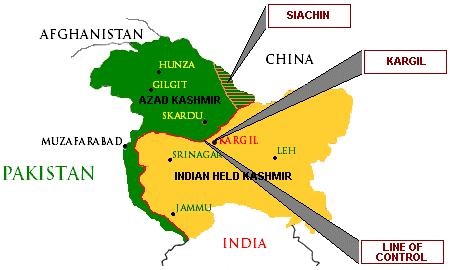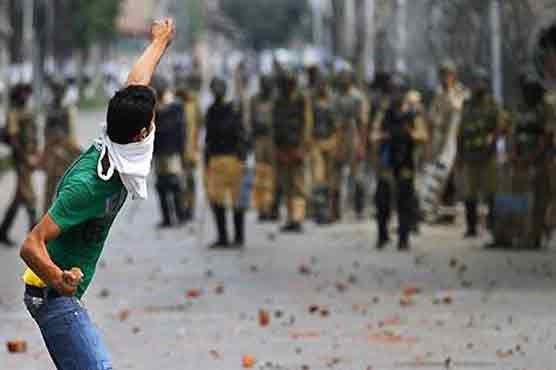By Moeed Yusuf
As global powers remain preoccupied with the fight against the Islamic State, nuclear South Asia has quietly slipped into crisis mode.
For some months now, India and Pakistan have been engaged in low level, tit-for-tat shelling on each other’s positions across the Line of Control (LoC) that divides the disputed territory of Jammu and Kashmir. Recent weeks have witnessed an appreciable uptick in violence.
Two weeks ago, Pakistan claimed that Indian shelling near Sialkot, one of Pakistan’s most heavily populated cities, killed eight civilians and injured about four dozen others. Both sides responded by blaming the other for triggering the episode. Mutual threats suited to a war setting have followed ever since.
Traditionally, one would have argued that these two sides are all too familiar with low intensity exchanges on the LoC and are fairly astute at keeping them localized affairs. But the present bout of tensions is far more dangerous precisely because it isn’t about the LoC per se. Rather, it is linked to a larger strategic tussle about the nature of their bilateral engagement.
Pakistan believes that Indian Prime Minister Narendra Modi is attempting to fundamentally and permanently alter the rules of engagement of the bilateral relationship by taking Kashmir off the negotiating table.
For years, India-Pakistan relations were held hostage to the Kashmir dispute. Pakistan pursued a “Kashmir first” policy, calling talks meaningless unless India agreed to negotiate sincerely on Kashmir ahead of all other issues. Visibly short on progress, Pakistan agreed to shift the goalpost closer to India’s ask in the late-1990s: that all issues of bilateral concern should be discussed simultaneously.
This cracked the code. Invariably, any time bilateral ties have improved, this formula has been in play, including in 2006-2007 when the two sides were remarkably close to finding a historical breakthrough on Kashmir.
Modi now seems to be maneuvering a step closer to the other extreme by seeking a “terrorism first” approach. When the prime ministers of the two countries met on the sidelines of the Shanghai Cooperation Organization summit in Ufa, Russia in July, India wanted the agenda of the talksrestricted to terrorism. Pakistan objected and hyped the Kashmir issue byinviting separatist Kashmiri leaders to meet its visiting national security adviser in Delhi. The talks were dead even before they took off.
More has followed. Pakistan has raised the profile of recent LoC incidents, seeking world attention. It has also launched a diplomatic offensive against India at the United Nations. For Pakistan, this is about getting the world to push Modi to leave the rules of bilateral engagement untouched. Modi is thus far unmoved, perhaps confident that the global recognition of India’s importance and the world’s shared concern about terrorism emanating from Pakistan will keep the pressure away.
Neither side will budge easily. If Modi feels that his country’s internal strength and global image gives him a decisive advantage to force Pakistan to shed its ambivalent policy towards anti-India militants once and for all and to position Kashmir as a purely internal Indian issue, he would want to keep pushing to test the limits of this belief.
For Pakistan, the worry is less about leaving Kashmir out in any particular round of bilateral talks and more about the perceived danger that India will present talks sans Kashmir as the new normal. This makes Kashmir’s inclusion in the next round of talks virtually non-negotiable for it.
The logjam is worrisome. One only has to tune into media in both countries to realize how easily the prevailing war hysteria can create dynamics of its own. But even apart from the obvious risks of escalation in a nuclearized environment, India-Pakistan tensions at this time have direct implications for regional peace.
The Pakistani army is involved in its most expansive counterterrorism operations since 9/11 and any distraction on its eastern border will give the Pakistani Taliban and its affiliated al Qaeda presence and even Islamic State affiliated factions a fresh lease on life.
Increased tensions on the Indian border will also raise the profile of India-focused militant outfits whose propaganda is most likely to gain traction in a context where anti-India emotions are running high in Pakistan. And perhaps of most immediate concern to the international community, a deterioration in the India-Pakistan relationship will inevitably spillover into Afghanistan. A reactivation of their proxy war there could well be the last nail in the coffin for Afghanistan’s already grim hopes for peace.
The world doesn’t seem to have fully comprehended what is afoot in South Asia. India and Pakistan remain deadlocked notwithstanding the niceties and promises to lower tensions at last week’s annual meeting between their border security agencies. In fact, they are all set to raise the diplomatic stakes further by going at each other at the upcoming United Nations General Assembly session scheduled to start Sept. 15.
Rather than backing one or the other’s claims, key international powers need to use the U.N. session to nudge India and Pakistan back to the negotiating table. Realistically, Modi will have to recognize that Kashmir can’t be wished away.
Equally, Pakistan and India should agree to prioritize conversations about terrorism in future rounds. Dealing with all issues simultaneously is the only formula that has worked to date, and it continues to offer the best hope for forward movement in the India-Pakistan relationship.
The alternative is to allow the situation to fester, and potentially escalate into a real crisis with nuclear risks. The danger is real.
‘Courtesy Foreign Policy’.


